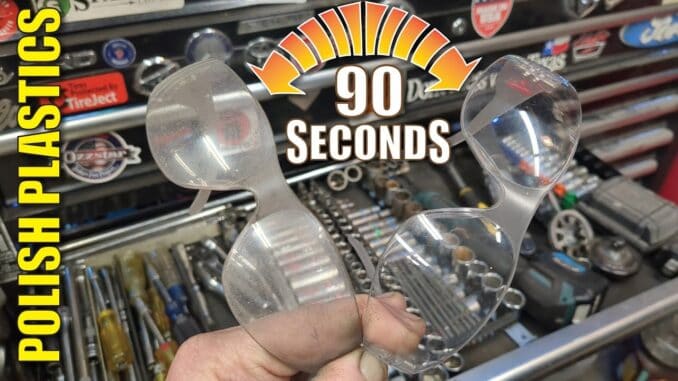
If you’ve ever been frustrated by scratches marring the surface of your clear plastics, whether it’s the windshield of your ATV, motorcycle, or even safety glasses, fear not! YouTube channel sixtyfiveford will walk you through the steps to restore clarity and remove scratches from various types of clear plastics like polycarbonates, plexiglass, Lexan, and more.
Understanding the Problem
Clear plastics are ubiquitous in our daily lives, from safety equipment like face shields and safety glasses to automotive components like windshields and gauge clusters. Over time, these plastics can accumulate scratches and scuffs, impairing visibility and diminishing their aesthetic appeal. Fortunately, with the right tools and techniques, restoring these surfaces to their former glory is possible.
Tools and Materials You’ll Need
Before diving into the process, gathering the necessary tools and materials is essential. You’ll need buffing wheels, a variable-speed polishing tool (such as an angle grinder or drill), and a polishing compound. The recommended compound for polishing clear plastics is Tripoli, a reddish-brown abrasive compound commonly used for polishing metals like aluminum.
Step-by-Step Plastic Restoration Process
- Prepare Your Polishing Setup: Mount your buffing wheel on your chosen polishing tool, ensuring it’s securely fastened and set to the appropriate speed. For larger surfaces, opt for a larger wheel to expedite the process.
- Apply the Polishing Compound: Apply a small amount of Tripoli compound to the buffing wheel. Start with a modest amount, as a little goes a long way, especially for smaller surfaces like safety glasses or face shields.
- Polish the Surface: With the polishing tool running, gently guide the buffing wheel across the surface of the plastic in smooth, overlapping motions. Avoid concentrating on one spot for too long to prevent overheating and potential melting of the plastic.
- Work in Sections: If polishing a larger surface, such as an ATV windshield, divide it into manageable sections to ensure thorough coverage and consistent results. Remember to polish both the exterior and interior surfaces for comprehensive restoration.
- Evaluate and Touch Up: Periodically stop and inspect the surface for progress. If necessary, reapply the polishing compound and continue buffing until scratches and imperfections are minimized.
- Final Touches: Once satisfied with the results, wipe down the polished surface with a clean cloth to remove any residue. Admire the renewed clarity and enjoy the improved visibility provided by your newly restored clear plastics.
Tips for Success
- Maintain moderate pressure on the buffing wheel to avoid damaging the plastic.
- For particularly stubborn scratches, you may need to spend extra time on those areas or consider using a softer buffing wheel.
- Be cautious when polishing tinted or coated plastics, as excessive buffing may compromise the tint or coating.
- Remember that achieving perfection may not always be feasible or necessary, especially for items like safety glasses or ATV windshields. Aim for significant improvement rather than absolute flawlessness.




